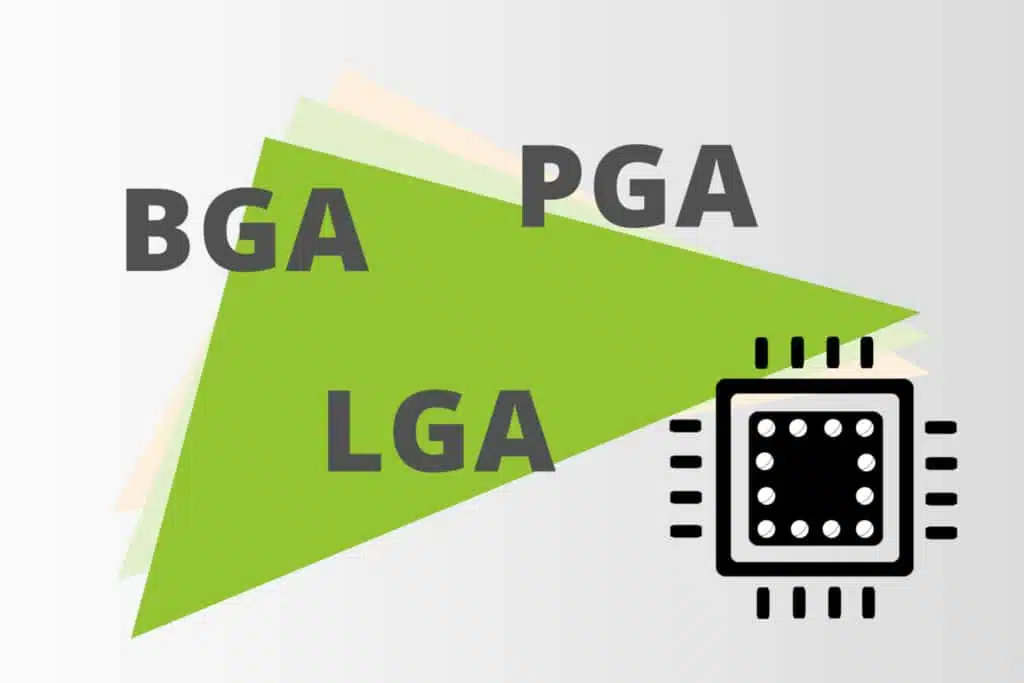28.01.2020

The abbreviations BGA, PGA, LGA and CCGA denote housing forms of integrated circuits. However, they differ in the type of connections.
The abbreviation BGA stands for "Ball Grid Array ". In this type of housing, small solder balls form the connections, which are arranged in a square grid of columns and rows on the underside of the chip. This design means that considerably more connections can be accommodated, about twice as many as with PGA. The solder balls provide short connections and therefore enormous performance.
The advantages of BGA are the small space requirement, good heat dissipation and low impedance due to short connection paths to the PCB. The chips can also be desoldered from the circuit board without damaging them. This makes it possible to remove old beads (deballing) and fill them with new beads (reballing). The chip can then be soldered onto a new circuit board. As soldered processors are mechanically and thermally extremely robust, BGA is mainly used in embedded CPUs.
A major disadvantage is that the solder joints can only be checked by X-ray, as the connections are concealed and difficult to access. This also severely restricts repair options. Special equipment, a so-called reflow oven, is required for safe soldering. In addition, BGA chips can only be used sensibly on multilayer boards, which somewhat limits their application possibilities.
The so-called "Pin Grid Array " ( PGA ) is mainly used in processors. While BGA uses soldering beads, the pin grid array - as the name suggests - uses small pins (i.e. "contact pins" or "legs") as connections. These are also arranged in a square grid, but the number of connections and arrangement of the arrays varies, so that there are a large number of variants and therefore also different CPU sockets. The rows of pins can be arranged in parallel or staggered and are marked with numbers and letters.
There are different variants of PGA:
As the pins are located on the CPU with PGA, the corresponding holes are on the motherboard socket so that the CPU can be installed without great pressure.
The "Land Grid Array" (LGA) is the exact opposite of PGA, as the contact pins are located on the socket of the mainboard. The CPU has the same number of contact points with which a connection is established. Intel has been using LGA for the majority of its Celeron, Pentium, Core and Xeon CPUs for many years.
One advantage of LGA is the smaller size of the pins, which allows a larger number of pins on the same surface area. Secondly, they are not so easily damaged because they do not have pins that can be crushed. Compared to LGA, PGA sockets have the advantage that the mainboard cannot actually be damaged. It is also easier to repair pins on a PGA processor than on an LGA mainboard.
Even if it has nothing to do with mini PCs, we would like to mention the Ceramic Column Grid Array (CCGA) here for the sake of completeness. CCGA housings are extremely reliable and are used in aerospace and military technology. The solder connections on the underside of the housing are column-shaped (hence the name "column") and consist of highly leaded solder. The columns are arranged in a grid, similar to BGA. They cannot be used in the civilian market as they are not permitted under the RoHS directives due to the high lead content as a result of EU trade bans.

Machines that know when they need to be serviced before anything breaks down. Sounds like a dream of...

Although the vacation season was at its peak for us in September, we can shine with two new products...

Digital signage has long been much more than just static screens. In times of Industry 4.0, smart bu...
You need to load content from reCAPTCHA to submit the form. Please note that doing so will share data with third-party providers.
More Information